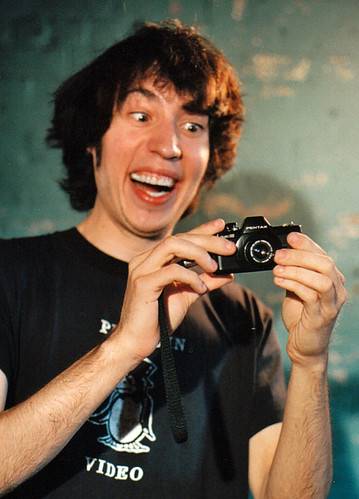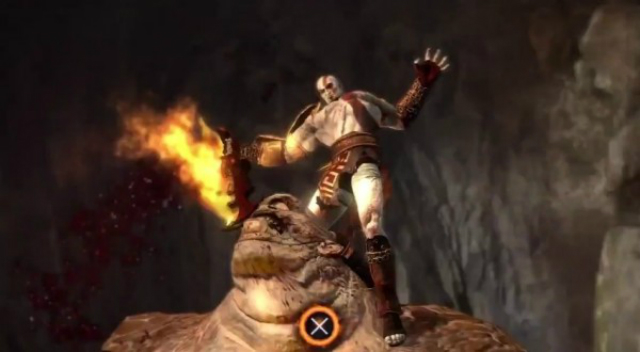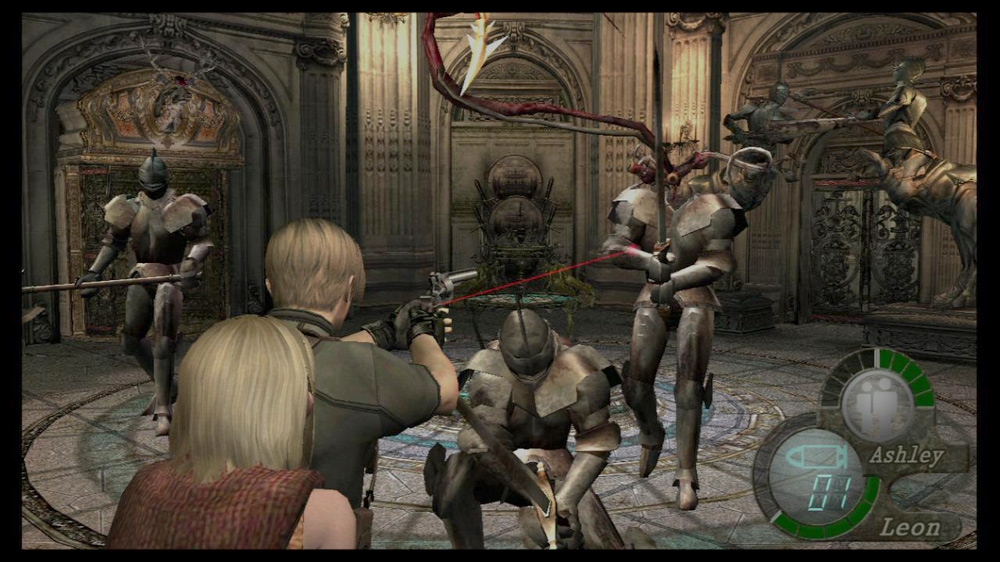I don't know who this guy is, but I hope you agree that his face is awesome.
Camera systems in games play an extremely important role in delivering an enjoyable experience. Not only does the camera represent the viewpoint of the player, it is also responsible for delivering a visually pleasing and functional scene. In this blog I'll be discussing some camera systems from older games and eventually, some much better ones from a few newer titles. Over the years developers have learned from each other's mistakes, and gamers' standards have risen. Back in the day, bad cameras were almost an acceptable part of 3D games. Now as games continue to grow in complexity, so do the cameras that power them.
Ok let's get started shall we.
Old Games, Bad Cameras:
Early Resident Evil Games
I remember this game being so scary in 1996..
Despite being one of my favorite game series' (with the exception of RE6), the Resident Evil franchise has had a history of awkward fixed camera systems. This was largely due to the levels being made up of 2D sprites (pre RE: Code Veronica). Often the player would be engaged by enemies located off screen, or occluded by objects in the level. To make matters worse the movement controls were not relative to the camera, giving the characters a tank like feel. Some would argue that the early RE games owe their scariness to the fumbly controls and awkward camera angles.
Skip to 6:24 to see what I mean.
Capcom eventually learned their lesson with Resident Evil 4, popularizing the now standard "over the shoulder" camera perspective. We'll talk about this one in the "good cameras" section.
Early Tomb Raider Games
Again don't get me wrong, I love these games. But boy did the camera make me rage.
The Tomb Raider series was one of the original innovators of the traditional 3rd person camera. The camera is offset a certain distance from Lara in the Y and Z axes, and follows her constantly. The camera interpolates to Lara's orientation as she runs forward (but not when turning on the spot). This is all well and good for the most part.
Dishonorable mention: Prince of Persia Warrior Within
SPOILER: Sands of Time was better.
As you probably guessed, I am a fan of the Prince of Persia series. The camera system in the Sands of Time trilogy was very good for the most part. However in Warrior Within, whenever the Prince encounters "the Dahaka" the camera takes a turn for the worst (no pun intended).
Thankfully they did not continue to use this system in subsequent Prince of Persia titles.
Games with good cameras:
God of War
There are many cases where a camera system is so natural that we as players don't notice it all. Chances are if nobody is complaining about it, the developers have gotten it right. God of War is known for it's brutal cinematic gameplay that makes you feel like a total badass. The game gives no camera control to the player as the right analog stick is used for dodging, yet somehow it works nearly flawlessly.
The series is partially responsible for popularizing the node based, cinematic action camera. This camera system involves interpolating between set camera nodes (positions in 3D space) based on the position of the main character. Each camera node has it's own properties (orientation, field of view) that are also interpolated accordingly. The main character's movement may also have a weighted influence on the camera's movement depending on the scene.
In combat the enemies and player become weighted nodes, each with their own varying amounts of influence on the camera's target position. The larger and more threatening enemies have a greater influence than the smaller pawns. This ensures that the scene is always well represented, and the player rarely dies to off-screen threats.
The game makes heavy use of quick time events (QTEs) which trigger a separate camera, synced to the animation of the event. As the animation progresses (Kratos decapitating a poor foe), the camera shakes and interpolates along a curve. These camera curves are specified in the QTE animations themselves.
Resident Evil 4
Resident Evil 4 was a major departure from Capcom's previous RE titles. For starters, the worlds were rendered in full 3D. While Code Veronica and Resident Evil Zero had already used 3D environments, this was the first Resident Evil game to adopt (and perfect) the "over the shoulder" camera.
This camera is fully controlled by the player, giving them precise aim during combat and a close up view of the game's many puzzles and objectives. These were two firsts for the series which lead to a change of direction to more action based gameplay, especially in subsequent titles.
Metal Gear Solid 4
I can't write a blog about cameras and not mention the Metal Gear Solid series. Notorious for being more movie than game, the MGS titles have always had a cinematic quality about them. Metal Gear Solid 4 is no exception.
If there's any one game that's demonstrated pretty much every camera technique I've mentioned (and more) to a tee it's this one.
So what have we learned?
A good camera system doesn't just need to make a game look pretty, it also has to work! This may seem self explanatory, but it can be easy for a camera to ignore information that is vital to gameplay.







No comments:
Post a Comment